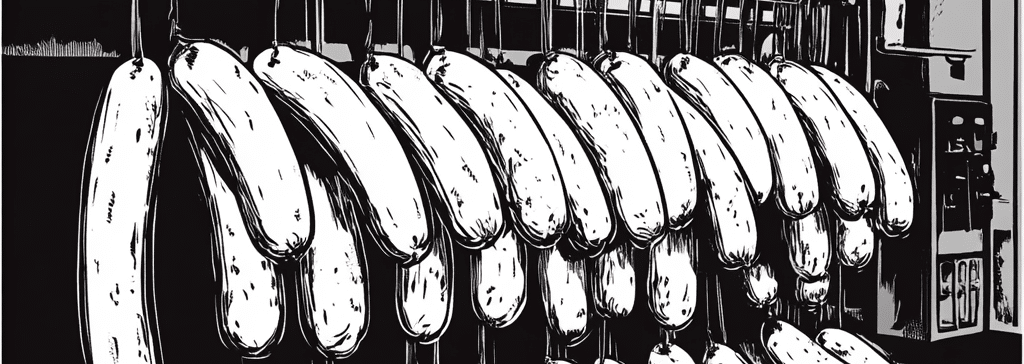Modern Meat Processing
For food processing plant engineers and buyers, selecting the right meat processing equipment streamlines operations, reduces waste, and improves profitability. With automation and smart technology advancing rapidly, modern meat processing lines now handle everything from portioning and vacuum sealing to robotic-assisted quality control.
This article explores:
- Essential equipment used in processed meat production
- Sausage manufacturing and key machines involved
- Innovations in meat processing technology
- Best practices for equipment selection
- Future trends shaping the meat processing industry
By the end, you’ll understand how to optimize your processing line with the best equipment available—helping you boost efficiency, improve consistency, and stay competitive.
Quick Takeaways
- Meat processing equipment is essential for efficiency, food safety, and production quality.
- Automation and robotics are revolutionizing the industry, reducing labor costs and improving precision.
- IoT-driven monitoring helps optimize processing line efficiency.
- Hygienic design and self-cleaning technology ensure compliance with food safety regulations.
- The future of meat processing involves sustainable processing solutions, AI, and alternative proteins.
What is Meat Processing Equipment?
Meat processing equipment includes a wide range of machinery used to cut, grind, mix, cook, and package meat products. It is essential for:
- Increasing production efficiency
- Ensuring product consistency and quality
- Meeting food safety regulations
- Reducing waste and manual labor costs
As the industry evolves, automation and robotics are playing a larger role in reducing processing time and improving hygiene.
Types of Meat Processing Equipment
Primary Processing Equipment
These machines handle the initial preparation of raw meat:
- Slaughtering Equipment – Ensures humane and efficient animal processing.
- Meat Cutters & Slicers – Used for breaking down carcasses into manageable cuts.
Secondary Processing Equipment
These machines prepare meat for final products:
- Industrial Meat Grinders – Reduce meat into smaller, uniform particles.
- Meat Mixers & Blenders – Ensure even distribution of spices, marinades, and curing agents.
- Sausage Stuffers – Fill casings with precisely portioned meat mixtures.
Final Processing Equipment
Used for cooking, preserving, and packaging:
- Smoking & Cooking Equipment – Essential for flavor development and preservation.
- Vacuum Fillers – Help prevent air pockets in sausage and deli meats, improving shelf life.
- Automated Packaging Machines – Ensure proper sealing and portioning of products.

The Sausage Manufacturing Process
Sausage manufacturing is a multi-step process requiring precision and hygiene. The key steps include:
1. Raw Meat Selection
Choosing high-quality meat with the correct lean-to-fat ratio is critical for texture and flavor.
2. Grinding & Mixing
Meat is ground to the desired consistency using industrial meat grinders, then mixed with seasonings and preservatives for uniformity.
3. Stuffing & Casing
The prepared mixture is filled into natural or synthetic casings using sausage stuffers.
4. Cooking & Smoking
Sausages are cooked in smokehouses to enhance flavor and shelf life.
5. Packaging & Storage
Processed sausages are packaged using vacuum fillers and automated packaging systems, ensuring longer shelf stability.

Innovations in Meat Processing Technology
1. Automation & Robotics
AI-driven robotic butchering systems improve precision, ensuring uniform cuts and portion control.
2. IoT & Smart Monitoring
Real-time tracking of meat quality and machinery performance enhances operational efficiency.
3. Hygienic Design & Food Safety Regulations
Equipment is now designed for easy cleaning, antimicrobial surfaces, and self-sanitizing functions to prevent contamination.
Choosing the Right Meat Processing Equipment
When selecting meat processing equipment, consider:
- Production Capacity – Match equipment to processing volume needs.
- Hygienic Design – Ensure compliance with food safety regulations.
- Automation & Efficiency – Look for energy-efficient smoking machines and automated meat slicers.
- Maintenance & Costs – Evaluate durability and long-term ROI.
What about Plant-Based & Alternative Proteins – Future facilities may require new processing machines tailored for alternative meat products. It’s still a small but growing market.
For food processing plant engineers and buyers, staying ahead of technological advancements in meat processing equipment is key to optimizing efficiency and staying competitive. Choosing automated meat slicers, vacuum fillers, and energy-efficient machines improves production and ensures food safety compliance.
Looking to take your processing line to the next level? Contact our sales engineering team at sales@velecsystems.com and optimize your operations for the future! 🚀

Frequently Asked Questions (FAQs)
1. What is meat processing equipment used for?
It is used to cut, grind, mix, cook, and package meat products, ensuring efficiency, consistency, and safety.
2. How does automation improve meat processing?
Automation reduces labor costs, increases precision, and improves hygiene with AI-driven robotic butchering and smart monitoring.
3. What are vacuum fillers, and why are they important?
Vacuum fillers remove air pockets, enhancing product consistency and extending shelf life in sausage production.

References
Velec Systems. Meat Processing Equipment Solutions. Retrieved from velecsystems.com.
Business Wire. (2024). Meat Processing Equipment Market Report 2024-2030.
KUKA Robotics. (2024). Automation in Meat Processing.
Just-Food. (2024). How the Meat Industry is Embracing Automation.
Industry Reports & Market Analysis on Meat Processing Equipment.




